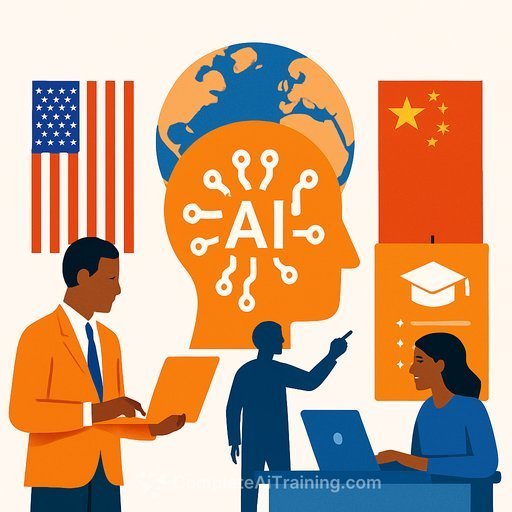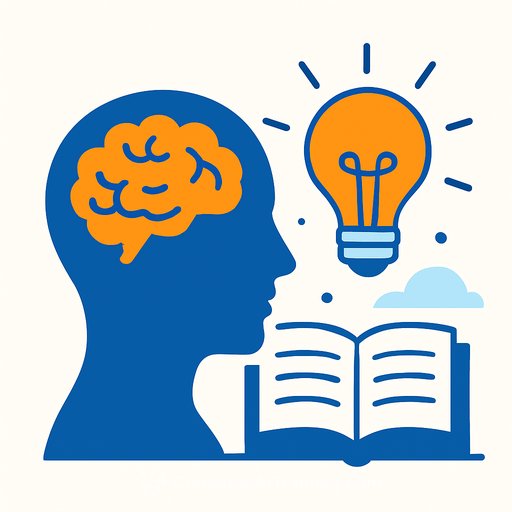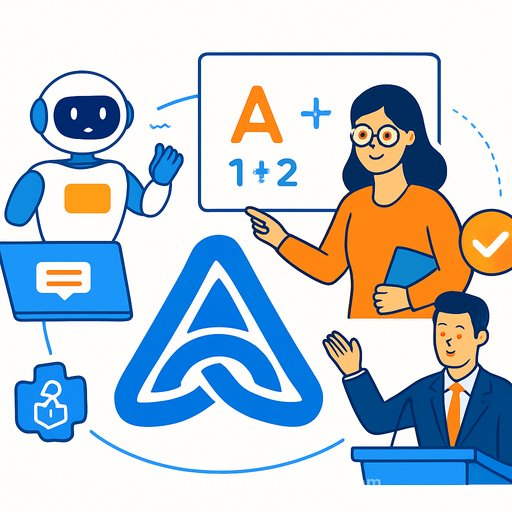The Age of Intelligence: Why Every Education System Must Build an AI Ecosystem Now
Picture two 10-year-olds in 2030. One memorises a textbook for an exam. The other learns with an AI companion that adapts in real time, feeds her curiosity and connects projects to her interests. Fast-forward 20 years: who will lead, invent and solve problems we can't yet see? This isn't fiction. It's the investment choice every nation must make today.
The big bet isn't another chatbot, drone or data centre. It's a national ecosystem for AI in education. Countries that learn how humans and machines learn together will set the pace for the century ahead.
The Old Model Is Failing Its Purpose
Schools were built for predictable jobs and clear hierarchies. Rows, bells, standardised textbooks and recall-based exams rewarded uniformity. That era is fading. Automation handles routine work, information is abundant and value now sits in creativity, judgment and adaptability.
If teaching stays focused on memorisation, we create a skills gap that software will fill. The cost is human potential. The fix is a new model where AI augments teachers and personalises learning at scale.
What an AI School Looks Like
- Real-time insight: Systems track progress, surface misconceptions and spot engagement dips without adding teacher workload.
- Adaptive learning: Content, pace and modality shift to fit each student's needs and strengths.
- Teacher co-pilots: AI drafts lesson plans, creates practice sets, grades formative work and suggests next steps.
- Human at the centre: Teachers mentor, design experiences and coach judgment, ethics, empathy and imagination.
- Data for action: Dashboards translate signals into plans for small groups, interventions and enrichment.
What Students Must Learn Now
The priority isn't "everyone must code." It's AI literacy: how systems work, where bias creeps in and how to collaborate with them wisely. The core habits are prompting, questioning and validating. Technical fluency matters, but discernment matters more.
- AI literacy: foundations, strengths, limits, bias and safety.
- Metacognition: learn how to learn; plan, monitor and reflect.
- Creative problem-solving: from framing questions to testing solutions.
- Ethics and media literacy: fairness, privacy, provenance and consent.
- Communication and collaboration: across disciplines and cultures.
- Data reasoning: read, question and act on evidence.
Lifelong Learning, Not Just Schooling
Learning won't stop at graduation. AI mentors will track how people learn, recommend skills as industries shift and connect peers working on similar problems. Early versions exist as "learning twins" in universities and companies.
In a decade, not having a personal learning companion may feel like not having a smartphone. Education systems should prepare people to work with these tools from childhood through mid-career reskilling.
What Leaders Should Do in the Next 12 Months
- Set a vision: Define the role of AI in learning, teaching and assessment. Keep teachers in the loop.
- Establish guardrails: Privacy-by-design, age-appropriate use, bias checks, accessible by default.
- Run focused pilots: Start with formative feedback, reading support, math practice and lesson authoring.
- Invest in teacher time: Ongoing professional learning, coaching and release time to test and refine.
- Choose interoperable tools: Open standards, secure APIs and exportable student data.
- Upgrade infrastructure: Reliable devices, bandwidth, identity management and content filters.
- Measure impact: Track learning growth, engagement, teacher workload, equity and cost per outcome.
- Bring families in: Clear communication, opt-ins and transparency on data use.
Practical Classroom Moves You Can Make Now
- Use AI for planning: Draft lesson outlines, Socratic questions and differentiated practice sets. Edit for context and accuracy.
- Make thinking visible: Ask students to submit prompts, outputs and verification notes, not just final answers.
- Assess better: Shift marks away from recall. Grade process, reasoning, critique and revision.
- Project-first: Tie standards to real problems and let AI handle rote drills in the background.
- Teach the tool: Weekly mini-lessons on bias, citation, inspecting sources and safe use.
Examples to Watch
Multiple countries are moving now. Estonia runs a national AI learning programme for teens. The UAE and Saudi Arabia have embedded AI into school curricula under Vision 2030. Some US schools are replacing fixed classes with personalised AI learning paths. For policy guidance, see:
Guardrails That Matter
- Privacy: Minimise data, encrypt at rest/in transit and set clear retention windows.
- Bias: Use diverse training data, audit outcomes and enable educator overrides.
- Transparency: Document model purpose, limits and data flows in plain language.
- Human oversight: Keep teachers accountable for decisions; no automated high-stakes grading.
- Wellbeing: Monitor screen time, build in offline work and protect attention.
- Equity: Ensure device access, language support and assistive features for all learners.
Funding and Procurement Notes
- Buy outcomes, not features: Tie contracts to measurable gains and reduced teacher workload.
- Pilot before you scale: 12-16 weeks with control groups and independent evaluation.
- Avoid lock-in: Prefer vendors who support open standards and easy data export.
- Total cost of learning: Budget for training, change management and support, not just licenses.
How to Measure Progress
- Learning growth: Curriculum-aligned pre/post checks and mastery progression.
- Workload: Teacher hours saved per week on planning, grading and admin.
- Engagement: Attendance, task persistence and student feedback quality.
- Equity: Gaps closed by school, region, language and support needs.
- Cost efficiency: Cost per percentage point of improvement.
Start Here
Begin with a one-class pilot. Pick a single outcome, select one tool, set metrics and review in four weeks. Keep what works, drop what doesn't and repeat.
If you want structured options for staff upskilling, explore curated AI courses by job role here: Complete AI Training - Courses by Job. Keep the focus clear: better learning, lighter workload, stronger human skills.
The Decision
Every generation has a defining investment. Electricity in the 20th century. The internet in the 2000s. In the 2020s, it's AI for education. The factory model of schooling is over. The age of intelligence has begun.
Your membership also unlocks:





